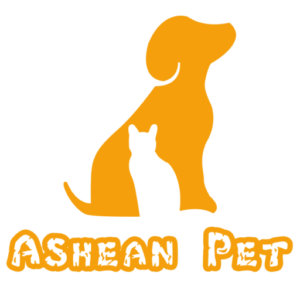
Understanding Non-Toxic Dog Toys
Every dog owner desires their dog to be happy, healthy, and protected. However, safety is another area rarely considered, especially regarding the toys that dogs play with. Harmless dog toys are created without toxic substances and substances hazardous to dogs' health, making them indispensable for our pets.
Non-toxic toys are manufactured using materials that are safe for your dog and do not cause health issues such as toxicity to your dog. They are explicitly designed to be safe toys, with no lead, BPA, phthalates, or other dangerous substances often used in some pet items. The focus is to provide soft and durable structures that offer the dog a free space to chew, bite, and play with its toys without the possibility of them being poisoned by chemicals remaining on them. Non-toxic dog toys are available in different categories, including chew toys, plush toys, and even interactive toys and puzzles, which make the available dog toys safe for all types of dogs.
The fact is that non-toxic accessories for dogs should not be ignored when maintaining and preserving your pet's health. Many dogs are also chewers and, thus, tend to roam around the environment with their teeth. Thus, this makes it essential to ensure that the toys are safe for them. Products that are manufactured using risky chemicals can cause various ailments, skin rashes or allergies, liver malfunctions, and even poisoning. This means that by selecting non-toxic toys, you would actively prevent your dog from exposure to such risks and ensure a healthy and happier pet. In addition, non-toxic dog toys are generally more resilient and eco-friendly as many producers apply sustainable methods and use harmless materials to improve the toys’ quality. This means you avoid possible pet sickness and create a healthier environment for your pet and the whole world.
Common Harmful Materials in Traditional Dog Toys
1. BPA (Bisphenol A)
BPA is a type of chemical that is widely utilized in creating plastic items. BPA is present in hard plastic dog toys, and as for rubber toys, not all but some contain this chemical. Overall, exposure to BPA is believed to cause hormonal imbalances and other health problems for your dog. Selecting BPA-free toys means that your dogs do not come into contact with this substance, which could be destructive.
2. Phthalates
Phthalates are a group of chemicals added to plastics to increase their flexibility, durability, or both. They are commonly found in soft plastic articles, especially toys. Phthalates are not the most permanent smell additives, as they can deteriorate with time and can be ingested by your dog if he chews the product, causing reproductive and developmental problems. Choosing toys not containing the compound phthalate helps protect the dog from such risks.
3. Lead
Lead is a poisonous metal that can be present in the paint and plastic of some of the toys designated for dogs. Lead causes severe health complications that affect the nervous system and the digestive system. Avoiding the use of lead in toys is very important when selecting toys, especially for your dogs.
4. PVC (Polyvinyl Chloride)
PVC is a category of plastic that usually has toxic components, including lead and phthalates, added to it. This material is flexible and relatively rigid, so many flexible dog toys are made with it. However, PVC can release poisonous chemicals, more often when chewed or exposed to heat. Selecting toys that are not made of PVC is of better quality for your dog.
5. Formaldehyde
Some dog toys, particularly those made from pressed timber or textiles, contain formaldehyde, a toxic chemical to dogs' respiratory systems and skin. Toys that are not toxic and do not contain formaldehyde are preferred when given to pets.

Health Risks of Toxic Toys
1. Chemical Exposure
The toys contain phthalates, lead, or bisphenol A (BPA), all of which are harmful to pets. Therefore, such toys should not be used. Such chemicals can become absorbed and be strong enough to be ingested by the human body through touch or the mouth. In the long run, they contribute to various health complications, such as hormonal imbalances, developmental complications, and even cancers and other related diseasses.
2. Respiratory Problems
Dangerous toys may emit fumes or particles that can lead to inflammation of the respiratory region. For example, some colorants applied to toys or plastics used for this purpose can release VOCs, which may cause a child suffering from an asthmatic lung to relapse or have an allergic reaction.
3. Skin Irritations
Some chemicals found on toys can cause skin rash, itching, or other related allergies. A toy with a sticky surface or a very predominant smell of chemicals should not be played with or should be washed first before use.
4. Developmental Issues
Lead, or some other heavy metal is used in some of the toys in the market, which are dangerous for children's growth. This is an open admission that lead exposure results in learning disabilities and low intelligence in children most of the time.
5. Digestive Concerns
Dogs like to play with their toys and often chew them, and toxic matter is dangerous if swallowed. Babies can have gastrointestinal issues ranging from mild digestive disorders to severe cases of poisoning by taking pieces of toys or chemicals in toys.
6. Long-Term Effects
It’s not just the toxins themselves that are at stake; toxic substances remain toxic even when microdosed over the long term. Thus, when exposures to TOCs are constantly received in an environment over time, the long-term impact will include endocrine disruption, cancer, or neurological disease.
7. Environmental Impact
Hazardous toys for human health equally or even more significantly impact the environment. Chemicals in these toys can easily find their way into the soil and water, negatively impacting the land and animal life.
Health Benefits of Non-Toxic and Recyclable Dog Toys for Dogs
1. Safer Chewing and Playing
Recyclable dog toys can be recycled and contain no toxic compounds, so your dog can safely chew and play with them without worrying about toxins. This leaves their mouth, gum, and overall health secure from toxins in some normal toys.
2. Reduces Allergic Reactions
Unfortunately, many dogs can be sensitive to synthetic materials and chemicals. Rubber toys for dogs and those that are recyclable do not have toxic effects on the skin or respiratory system, allergies, or irritations. This also means that your pet friend can play with toys without itching or experiencing any discomfort.
3. Environmentally Friendly
Taking your dog to playtime frequently with recyclable toys offers more advantages to your dog and the world. Most toys in Babaroto’s collection are recyclable, and the material used for toys can be recycled after utilization. This reduces the wastage and detrimental impact of carbon on humans and animals, creating a better world for both man and animals—pets in particular.
4. Durable and Long-Lasting
Factors indicating that recyclable dog toys are usually more durable than conventional toys are that the intended toys are intended to be robust devices. This results in the product’s more durability and fewer replacements, hence offering your dog continuous and long-term play to solve his or her mental challenge.
5. Promotes Dental Health
Some of the available non-toxic dog toys made from recycled materials have been developed for the dental health of particular dogs. When properly and frequently used, they can assist in removing stains, massage the gums, and help remove plaque. This leads to enhanced dental health since the dog will develop fewer diseases affecting its teeth, which will freshen up its breath and strengthen its teeth.
Environmental Benefits of Recyclable Dog Toys
1. Reduces Plastic Waste
Their being recyclable makes their use contribute less to the quantity of plastics that find their way to landfills and oceans. Why settle with toys that will be disposed of as waste only to contribute to pollution of the environment and harm various forms of wildlife or spoiling ecosystems?
2. Conserves Natural Resources
Most recyclable toys dogs use are manufactured from recycled material, reducing the amount of raw material required. This has the ripple effect of preserving natural resources such as petroleum, which is used to synthesize plastic. Thus mitigating the need to source raw materials and being environmentally friendly when manufacturing products.
3. Lowers Carbon Footprint
Many dog toys come with an environmentally friendly tag. Manufacturing and recycling the toys emits less energy than manufacturing new plastics from the ground. This, in turn, reduces the incidence of greenhouse gas emissions, helping fight climate change.
4. Encourages Sustainable Practices
Therefore, selecting recyclable dog toys will contribute to organizations that are sensitive to environmental conservation. This will encourage even more businesses to adopt green initiatives, resulting in a wide range of positive environmental effects and increasing the sustainability culture.
5. Promotes a Circular Economy
Recyclable products play a role in the principles of a circular economy in that they are made for recycling, reuse, and helpful repurposing. This decreases the quantities of waste and covers the idea that things should be in use for as long as possible, resulting in less environmental harm and, therefore, development for a better and sustainable world.

How to Keep Your Dogs Safe?
1. Choose Recyclable Materials
Choose toys made from biodegradable materials such as natural rubber, bamboo fabric, or any other recycled fabric. These materials can be safely assumed to contain less hazardous substances and are suitable for the earth. When considering such products, search for brands that stress manufacturing products free from toxic elements.
2. Read Labels Carefully
It is always important to look at the labels or specs of the toys labeled for dogs. Respectable brands will give information about the material used and whether the toy contains any poisonous substance. The information concerning reusable canine products could comprise wording that the products are safe or contain safety stamps.
3. Inspect for Certification
Look for seals from bodies such as the American Society for Testing and Materials (ASTM) or others. These certificates can help you eliminate toys that are likely to have dangerous compounds and are safe for children.
4. Avoid Toys with Small Parts
Choose recycled dog toys with no appendages or flip them out into different extra pieces. Small parts may threaten the consumers because they might choke, and sharp edges containing dangerous elements might come off.
5. Regularly Check and Replace Toys
Check your dog's toys often to identify signs of wear. Even recyclable toys can become damaged with time. Discard any toys you observe that are cracked, torn, or showing signs of falling apart to eliminate the chance of your dog chewing on them and/or accessing hazardous substances.
6. Opt for Non-Toxic Chews
Choose chews and toys that are safe for dogs because they are nontoxic. Most recyclable dog toys are safe and not prone to having small parts that would be dangerous for the dog to ingest.
7. Research Brands
Choose items produced by organizations that guarantee safety and ecology. These brands ensure safe materials, specifically recyclable ones, and quality control measures.
8. Avoid Toys with Strong Chemical Odors
A toy with a bad odor associated with chemicals may not be safe for children to use. Minimize toys with a strong smell since this may imply they are toxic.
9. Educate Yourself on Safe Materials
Learn about safe materials used in the production of dog toys. Some naturally sourced materials, like natural rubber, hemp, and even organic cotton, are less dangerous and have less impact on the environment than synthetic plastics.
Conclusion
The non-toxic and recyclable dog toys in your pet’s playtime are safe for them and the environment. When you opt for these friendly earth options, your cute pet will be safe from the toxic effects of those chemicals and the environment. The target of these toys is to introduce a long-lasting, stimulating activity that will keep your dog entertained without the presence of dangerous components.
The advantages do not end with physiological and welfare aspects. Recyclable dog toys are better for the environment compared to toys made from non-recyclable materials, as they reduce wastage and conserve resources. It is up to you to help contain the damage and stop contributing to the mound of plastics in landfills and the sea for the betterment of future generations of pets and mankind.
Are you ready to contribute positively to your dog’s health and the world around you? Check out our website's selection of recyclable dog toys and purchase one to provide your dog with an enjoyable, safe, and environmentally friendly activity.

FAQs
1. How does using recyclable dog toys help in reducing pet-related waste?
In general, it is important because toys designed for dogs can be subjected to recycling and used again or be buried in industrial dumps resulting in the production of toxins that harm the environment. It reduces the overall environmental effects and has encouraged a sustainable model of managing pets/animals.
2. Why are non-toxic dog toys important for my pet's health?
Non-toxic dog toys are very important because chemicals like phthalate, lead, and BPA, which are used in manufacturing familiar toys, are dangerous to pets and can cause deterioration of health from allergies to digestive tract failure to cancers. Safe toys are not a danger to your dog’s health if swallowed or if the dog decides to chew on them.
3. How do non-toxic, recyclable dog toys compare durability and cost?
The non-toxic and recyclable materials used to make dog toys are usually of high quality and, therefore, very hard-wearing. However, Traditional toys might be cheaper initially than innovative ones, yet most innovative ones are safer and more durable than traditional ones.
4. What are the signs that a dog toy might be harmful or toxic?
It is suggested that toys with a smell of chemicals, change in color, or if the toy has a sign of cracking or chalking. If your dog experiences any reactions from the toy, such as stomach upsets or skin rash, you should stop using the toy and speak to your veterinarian.
5. What are the common misconceptions about non-toxic dog toys?
Some misconceptions people have are that non-toxic toys are not strong or more expensive. In reality, many non-toxic toys are made from high-quality material that is built to last, and they bring many health benefits to pets and a better environment for our beloved pets. Thus, the cost should not be an issue to worry about.
